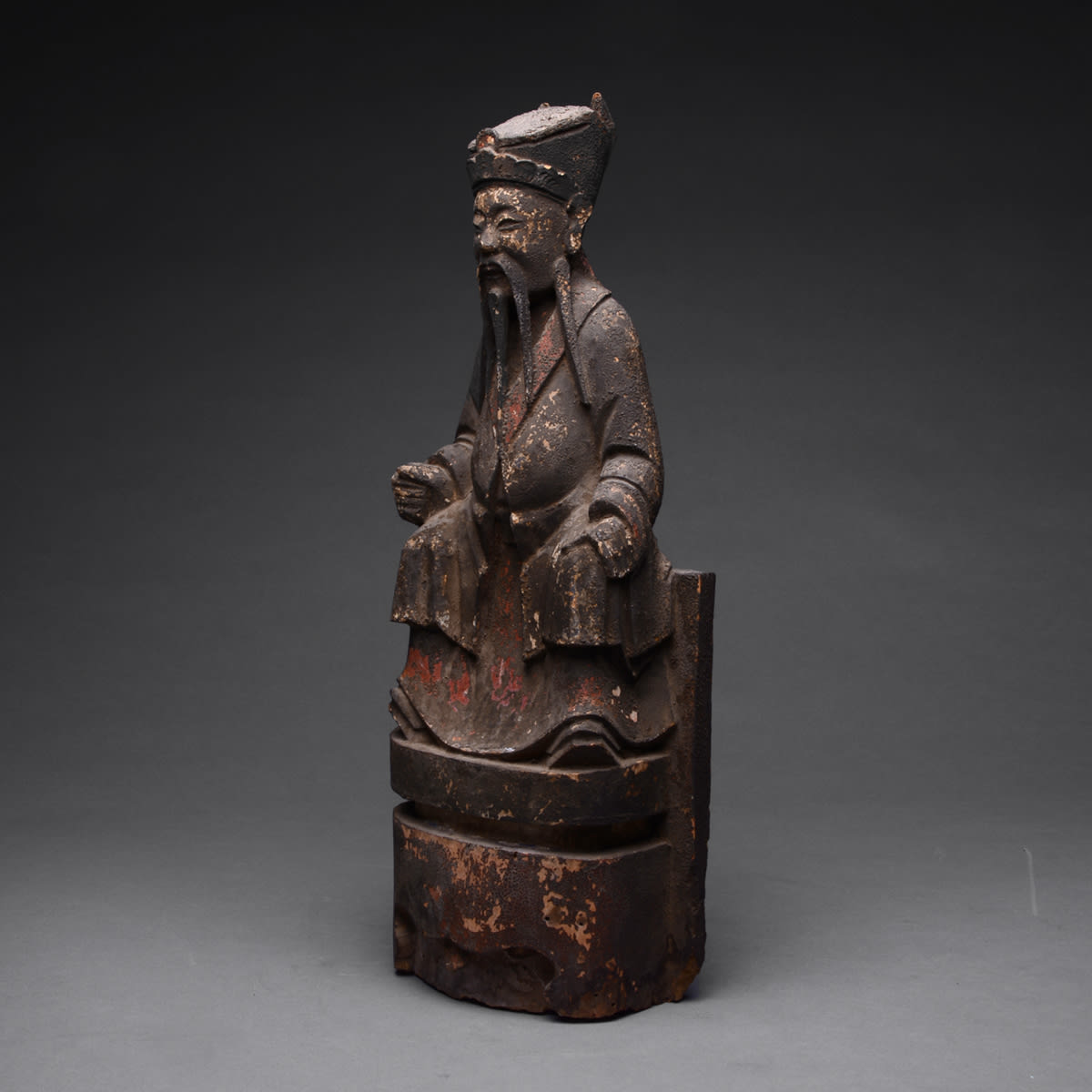Qing Sculpture of a Seated Man, 1368 CE - 1911 CE
Wood
36.8 x 14.6 cm
14 1/2 x 5 3/4 in
14 1/2 x 5 3/4 in
PF.5154
Further images
Seated in a wide stance with his hands placed on top of his knees, this figure assumes a posture fitting for an emperor, deity, or noble ancestor. He clenches his...
Seated in a wide stance with his hands placed on top of his knees, this figure assumes a posture fitting for an emperor, deity, or noble ancestor. He clenches his right hand, which once held an emblematic object and faces forward in a firm, dignified manner. Despite this formalistic position, the figure conveys a sense of humor and generosity in his warm facial expression and bulging belly. Sporting a long, forked moustache and beard characteristic of Guandi, the God of War, he adorns a tall cap flattened at an angle with a decorative band, front piece, and double-pronged back piece. The outer coat, once white with red trimming, hangs heavily on the body with sharp, linear folds and a slit in the middle. A long red skirt sweeps over the arches of cloud-tipped footwear. Taoism as a religion developed at the same time as Buddhism was becoming accepted, and the two faiths enjoyed a complex relationship. The practice of ancestor worship precedes the establishment of these traditions, but became more articulated with Confucianism around the same time. It is impossible to speak of the three traditions as separate entities, as each appropriated the other's concepts and modes of representation, as evidenced in this wooden carving. Possibly the Taoist deity of war, this figure exudes with the grandeur and radiance that becomes a being of divine origin.







